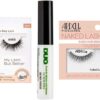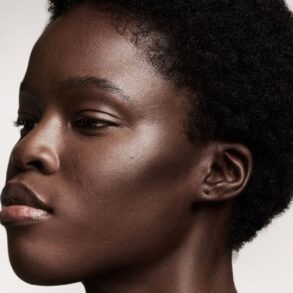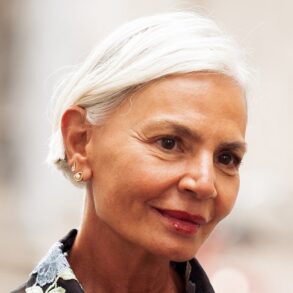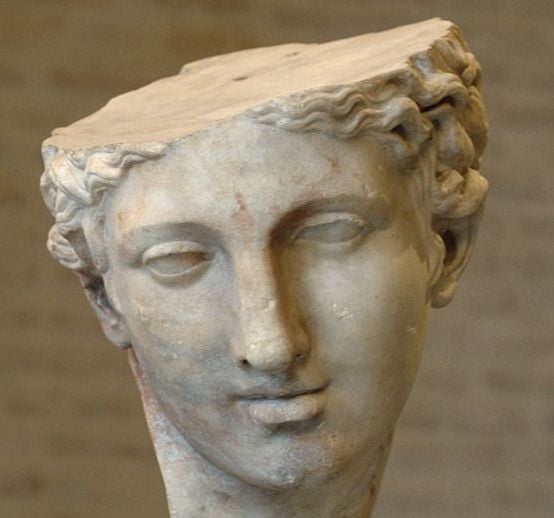
Beauty was extremely important in ancient Greece both for men and women. But who, exactly, was considered beautiful in ancient Greece? Were their beauty standards much different from our own?
The countless works of art depicting the human form, and philosophical treatises on the nature of beauty from antiquity attest to the fact that beauty was indeed much prized in ancient Greece.
In fact, ancient Greeks believed that physical beauty had a direct correlation to internal beauty, meaning that good-looking people were also morally good while those deemed “ugly” were lacking character.
Ancient Greeks who were beautiful, particularly men, were often described as “kaloskagathos,” an adjective that combines “kalos,” meaning beautiful or handsome, and “agathos,” which mean virtuous or good.
This concept is complicated when it comes to female beauty, however.
Women who were stunningly beautiful, and even women generally, were often either “bad” figures or, at best, morally ambiguous ones in Greek mythology and literature.
The most beautiful woman in the world, Helen of Troy, is the perfect example of this phenomenon.
While scholars may argue about the extent to which Helen was a willing participant in leaving her husband Menelaus for Paris, an act which caused the Trojan War, there is little doubt that she was not a beloved figure in ancient literature.
It seems that beautiful women were doomed from the start. Hesiod, an ancient Greek poet who was a contemporary of Homer, described the first woman as “kalon kakon,” or the beautiful, evil thing in his work Theogony, which describes the origins of the Greek gods.
The nature of beauty was a topic of great debate in ancient Greece. Philosophers, mathematicians, and artists in antiquity explored the topic endlessly.
Unibrows and the quest for symmetry in ancient Greece
Famously, the brilliant mathematician, Pythagoras, developed the Golden Ratio, a geometrical formula that linked balance and symmetry to beauty—and not just amongst humans but in everything. According to this ratio, symmetrical faces are the most beautiful.
This devotion to symmetry even extended to eyebrows. In ancient Greece, those with eyebrows that joined in the middle—in a so-called unibrow—were considered more symmetrical and therefore more beautiful.
Those who did not already have a unibrow were known to use kohl, or black shadow-like eyeliner, to fill in the space between their eyebrows. Women in ancient Greece would also use this to line their eyes and darken their eyelashes.
While many beauty standards from the past are not appealing to our contemporary sensibilities, there are some that indeed are.
According to Pythagoras’ Golden Ratio, the supermodel Bella Hadid is the most beautiful woman on earth—even without a unibrow.
Pythagoras may have had a point. Neurological and psychological testing has shown that humans do tend to prefer faces that are symmetrical but not unnaturally so.
Male beauty standards in ancient Greece
Much like today, beauty pageants, or “kallisteia,” were popular in ancient Greece. In antiquity, however, many were reserved for men.
However, on the islands of Lesvos and Tenedos, there are records of beauty pageants in which women participated.
They were so important that they were often linked to the Olympic Games, either taking place around the same time or at the same venue.
Male beauty was focused on the body. Athletic physiques with rounded, firm muscles and little fat were considered most attractive.
Men with reddish-blonde hair, full lips, and glistening tans were considered to be the most beautiful in ancient Greece.
Big butts were sought after in ancient Greece
In ancient Greece, a corpulent behind, on both men and women, was prized.
The famed Aphrodite Kallipygos, literally translating to “Aphrodite of the beautiful buttocks,” shows the goddess (although some argue it could be a mortal woman) showing off her rounded behind.
While some could say this mirrors our current Kardashian-inspired fixation with prodigious rumps, perfect female bodies in ancient Greece often came with more fat generally.
While today women focus mainly on the buttocks and chest and hope that there is very little to be found anywhere else, ancient Greeks preferred curvaceous women with bellies and a nipped waist.
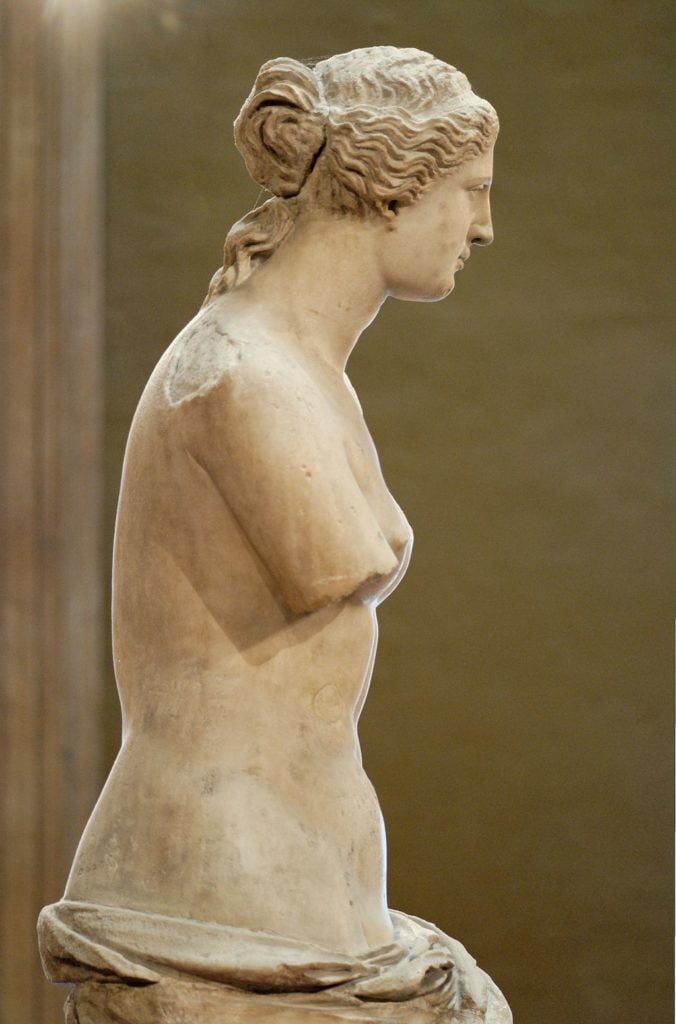
This is exemplified by the countless depictions of Aphrodite, goddess of love, with a distinct pouch of fat on her lower stomach and larger hips that were not totally rounded.
Until very recently, having extra fat was considered extremely attractive on a woman, as it served as an indication of her class.
Women who were thin were likely slaves or laborers who engaged in physical labor all day and could not afford to eat sufficiently.
Fair skin was the beauty standard in ancient Greece
Similarly, pale skin was sought after in ancient Greece, a beauty standard that may seem unattainable and much different than our current fixation with glowing, tanned skin.
In a country known for its intense heat and many sunny days, one could easily assume that staying pale was difficult for ancient Greek women, especially considering that those with Mediterranean complexions tan very easily.
However, women, save for slaves and those of the lower classes, were largely restricted to the home, particularly in Athens. Many of them could only leave the house on the event of special festivals or other important events.
Slaves and lower class women could leave the house much more freely, so they were often tan.
Otherwise, females were stuck at home, meaning that they came in little contact with the sun. Naturally, this led to pale skin, but it also caused a sallow, unhealthy appearance, as well.
There are countless ancient texts advising women to don powdery, white makeup, which was largely lead-based, on their skin to maintain a pale complexion while covering any blemishes.
In the ancient world, as a matter of fact, lead was one of the most widely-used substances in makeup. Known today to cause severe developmental delays, infertility, and dementia, it was used in a paste form, much like today’s foundation, to whiten the complexion and make a woman look more youthful.
Women often used blush and lipstick made of natural sources like beets and berries to add a flush of color to their faces.
Golden-red hair considered the most beautiful
Frequently, the most sought-after traits are those that are least common. In ancient Greece, blue eyes and reddish-blonde hair were considered extremely beautiful.
Considering that modern Greeks share a great genetic similarity to the Greeks of antiquity, it is safe to assume that the ancients resembled contemporary inhabitants of the country where blue eyes and light hair are still uncommon.
Even heroes were given this distinction, relating to the idea that physical beauty related to inner goodness in ancient Greece. The Mycenean king Menelaus, an integral figure in the Trojan War, was described as “red-haired” in the Odyssey.
His wife, Helen of Troy, considered the most beautiful woman in the world, was fair, with long, golden-red hair and blue eyes, according to the ancient Greek poets.
Some scholars have posited that the descriptor of blondish-red or reddish-blonde hair may not refer to the strawberry blonde hue that we think of today.
Rather, it may refer to a light-brown color that glimmers golden red in the Mediterranean sunlight.
Women wore long wigs, conditioned their hair and skin with olive oil
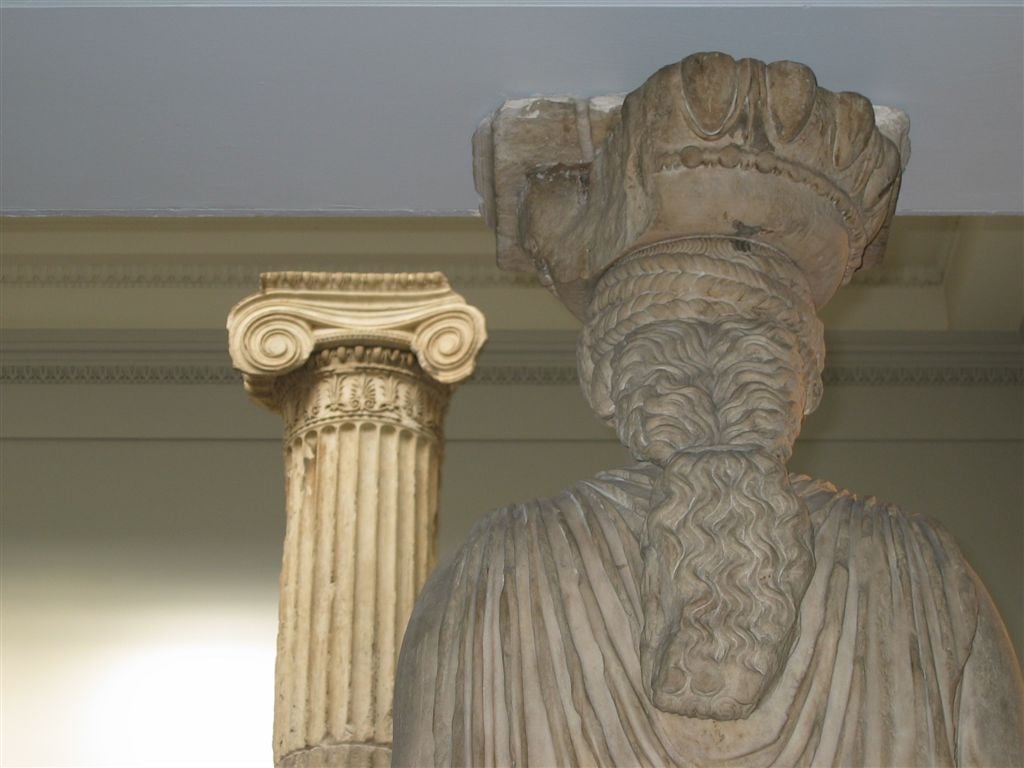
In terms of hair styles, Greek women of the upper classes wore their hair long, often braided and coiffed into intricate styles. If they did not have long, thick hair, women in antiquity often wore wigs.
Slave women and women of the lower classes were not permitted to have long hair and often had their hair cut very short.
Ancient Greek women used olive oil to condition their hair and skin, but, of course, this was only used by women who could afford it.
While blue eyes were particularly rare and prized in ancient Greece, so were big brown eyes with long, dark eyelashes.
In Homer’s Iliad, Hera is described as “cow-eyed,” an epithet that may seem insulting today, but was highly complimentary in antiquity. it referred to those large, round, brown eyes with rows of thick eyelashes that are more common than a blue eye, yet were just as striking, in ancient Greece.
This post was originally published on this site be sure to check out more of their content.



